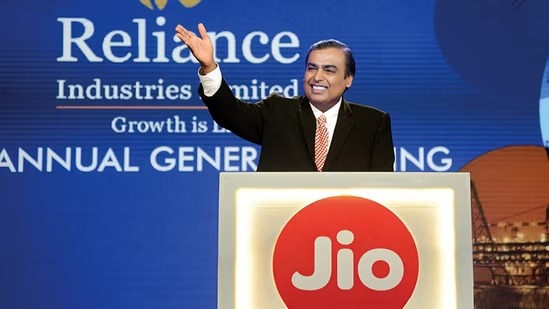A.L. Bahri, J.@mdashIn this petition filed u/s 12 of the Contempt of Courts Act Smt. Veena Sikka alleged violation of the order passed by this Court in C.W.P. No. 6150 of 1988 dated July 25, 1988. The order was passed as under:
It has been mentioned in paragraph 8 of the writ petition that the services of the Petitioner have been terminated inspite of the order Annexure P.2 dated July 4, 1988.
Notice of motion for August 8. 1988.
Dasti only. Satus quo as it exists today.
Annexure P. 2, as mentioned in the order aforesaid, is dated July 4, 1988, intimation sent by S.S.S. Board, Haryana, to the Petitioner about her selection for appointment as General Foundation Course Instructor. It may be stated that earlier she was wording on the said post on ad hoc basis. On July 27, 1988 i.e. two days after the passing of the aforesaid order the services of the Petitioner were terminated (relieved with effect from July 22, 1988). The alleged order of termination is stated to be dated July 21, 1988. This was done in clear violation of the order passed in the writ petition aforesaid. The aforesaid writ petition came up for final hearing on October 3, 1988 and was disposed of with the following order:
The learned Advocate General, Haryana, states that in cases which are covered by a Division Bench judgment of this Court in CWP 72 of 1988 (Piara Singh v. State of Haryana) decided on 26th September, 1988, the Petitioner would be given the relief according to that judgment subject to right of the State to appeal to the Supreme Court.
In view of the aforesaid statement made by the learned Advocate General, the writ petition is disposed of in terms of Division Bench judgment of this Court in Piara Singh''s case (supra) decided on 26th September, 1988. The Petitioner will have costs of the petition, which are quantified at Rs. 500.
Thereafter the Petitioner filed several representations, last being dated March 6, 1990. However, the Petitioner was not taken back in service.
2. After notice to show cause for taking contempt proceeding was issued, the Respondent submitted the reply, inter alia, alleging that there was no intentional disobeyance of the order passed in the writ petition. There was delay in filing the contempt petition which was not maintainable on that account in view of Section 20 of the Contempt of Courts Act. On merits it was stated that only one junior person to the Petitioner was still in service in view of some orders passed by the Court otherwise the Petitioner was the junior most. The order terminating the services of the Petitioner was sought to be delivered to her on July 22, 1988 when she visited the office. However, she left the office without acceptance of the said order. On the same day copy of the order was pasted at her residence. It was further stated that the main case of Piara Singh was pending in the Supreme Court on the basis of which writ petition of the Petitioner was allowed. The Supreme Court had stayed operation of the order passed by this Court in Piara Singh''s case. In the case of the Petitioner the Respondent State had filed SLP in the Supreme Court with a prayer for staying operation of the order. However, the same has not come up for hearing.
3. Two questions have been debated during arguments: (1) as to whether the services of the Petitioner had been dispensed with before interim order regarding status quo of the service of the Petitioner was passed by the High Court in the aforesaid writ petition and (2) as to whether there is intentional and deliberate action on the part of the Respondent in not taking the Petitioner in service Because of pendency of the SLP in the Supreme Court in Piara Singh''s case operation of the order of the High Court having been stayed by the Supreme Court.
4. Some evidence was recorded in these proceedings on question No. 1 as referred to above. Statement of G.S. Saxena (RW 1) was recorded. He deposed about the despatch of letter-Annexure R.2 to Smt. Veena Sikka on July 22, 1988,--vide endorsement No. 352-353. During cross-examination be stated that order Annexure P.l was despatched on July 27, 1988,--vide endorsement No. 465 relating to termination of Veena Sikka. At the very outset it may be stated that the Petitioner deliberately concealed the fact that intimation of terminating her services,--vide order dated July 21, 1988 and relieving her with effect from July 22, 1988 and that this order was pasted at her residence. The Petitioner put up the case that it was on July 27, 1988 when copy of the order was sent to her which was stated to be P.l dated July 27, 1988. It was during the arguments that from his own brief counsel for the Petitioner produced the original of letter dated July 22, 1988 which was pasted at the residence of the Petitioner. It is significant to note that during the pendency of the present petition at no stage the Petitioner disclosed as to when she came to know about the pasting of the aforesaid order at her place of residence. There is no reason to disbelieve the Respondent''s assertion that on July 22, 1988 when the Petitioner refused to accept this order, the same was pasted at her residence. The stand of the Respondent appears to be correct that on July 25, 1988 when interim order was passed in the writ petition to maintain status quo regarding service of the Petitioner, the Petitioner had already been relieved from service and thus it was not required of the Respondent to allow the Petitioner to resume duty under the aforesaid order of status quo.
5. With regard to the second point, it has been argued on behalf of the Respondent that it was not expected of the State of Haryana to challenge in every case the rule of law as laid down in Piara Singh''s case in this Court as one appeal has already been filed in the Supreme Court in Piara Singh''s case. The Supreme Court, having stayed operation of the order, in Piara Singh''s case, in all other similar cases in which orders are passed by the High Court separately based its decision on Piara Singh''s case, it was not expected of the Respondent to implement the same because of the fact the Supreme Court staying operation of the order in Piara Singh''s; case. In support of this contention reliance has been placed on the decision of the Supreme Court in
6. There is another aspect which needs consideration. The writ petition filed by the Petitioner was finally allowed on October 3, 1988, whereas the contempt petition was filed on March 26, 1990. Section 20 of the Contempt of Courts Act provides as under:
No court shall initiate any proceedings. for contempt, either on its own motion or otherwise, after the expiry of a period of one year from the date on which the contempt. is alleged to have been committed.
A bare perusal of the aforesaid provision would show that after one year from the date on which the contempt is alleged to have been committed, Court is not to initiate the contempt proceedings. In case the Petitioner''s contention is accepted that the contempt was committed on the day the writ petition was allowed, the provision of Section 20 of the Contempt of Courts Act would come in her way. The mere fact that the Petitioner had been filing representations one after the another will not in any manner enhance the period of limitation. At this stage without further commenting on the subject, it may be stated that if no favourable order is passed by the Supreme Court on the petition filed by the State, the State is expected to comply with the directions given in the writ petition and if deliberately at that stage no action is taken, the Petitioner can approach the Court for appropriate relief.
7. For the reasons recorded above, this petition is dismissed. There will be no order as to costs.

